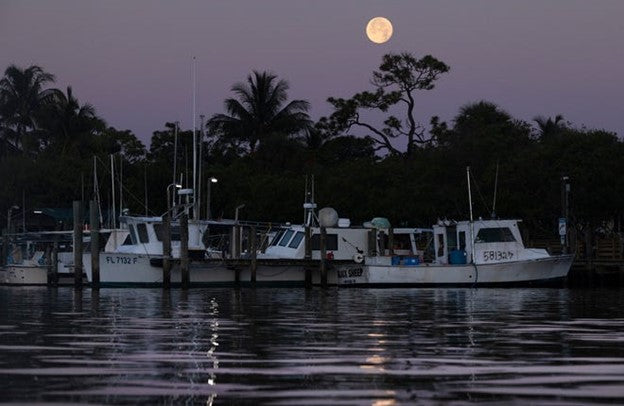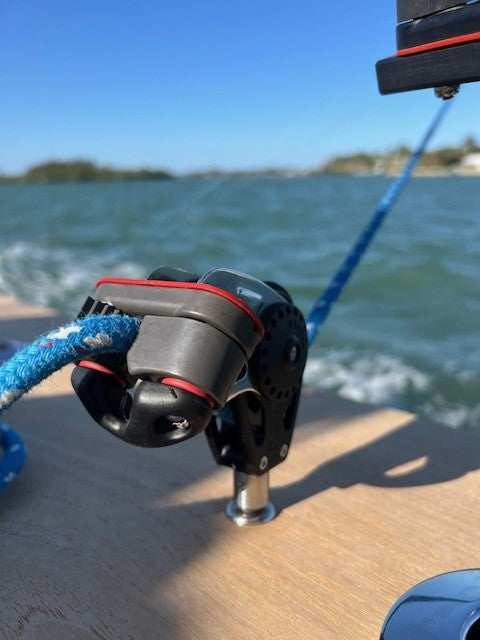By Frank Hugelmeyer, President and CEO of the National Marine Manufacturers Association, the leading trade association for the U.S. recreational boating industry
June 28, 2024
Summer is officially here and that means peak boating season is upon us. The White House recently recognized National Safe Boating Week, meant to encourage safe practices for one of America’s favorite pastimes. Ironically, while the White House was championing safe recreational boating, one of their agencies is proposing a rule that will put the safety of boaters at risk.
This proposed rule, which would force small, recreational boats up and down the Eastern Seaboard to travel at 10 knots (11 mph) for up to seven months out of the year, has been proposed by the National Oceanic and Atmospheric Administration (NOAA) as the only way to save the endangered North Atlantic right whale. The truth is, not only is the proposed rule ineffective at protecting the whales, but it also creates perilous conditions for recreational boaters on the Atlantic Ocean.
Dynamic conditions such as tides, shoals, weather, waves and winds all play a role in the operational safety of boats, even on clear days. Slow speed requirements are dangerous in small recreational boats designed to plane–in which the speed allows the boat to sit more out of the water–an essential way for a boat to operate, especially given the ever-changing conditions of the ocean. In addition, slow speed in smaller boats inhibits visibility and the ability for the boat operator to see the horizon, due to the elevated bow blocking the driver’s view. This, in turn, does exactly the opposite of what the rule intends, which is to ensure boaters avoid hard-to-see North Atlantic right whales in the water.

As boaters, protecting our marine wildlife is core to our experience on the water. Our ability to enjoy the wellness benefits, connection with our friends and family and the freedom of being on the water depends on the health of our oceans, lakes and rivers. However, protecting the North Atlantic right whale must not be done at the expense of human safety.
There are also numerous hazardous inlets and channels along the Eastern Seaboard that require higher boat speeds, often exceeding 10 knots. In these environments, a blanket government regulation that restricts and forces small boat operators to maneuver against their better judgment is completely inappropriate, even reckless.
By issuing a proposed rule that requires small, recreational boats to operate at 10 knots even when near gale force winds, unpredictable weather, currents and other unexpected conditions exist, it seems as though NOAA did not take a serious, rigorous or data-driven approach in crafting this rule for recreational boating.
Further, the fact remains that large ocean-going ships, not recreational boats, are the cause of the vast majority of whale vessel strikes. While we believe the recreational boating industry is being unfairly targeted by this NOAA rule, we continue to offer to every lawmaker and government agency that we can be a part of the solution.
If NOAA had reached out to us, they would have found that because we care so deeply about the North Atlantic right whale and all marine life, recreational boating technology already exists to help solve this conservation challenge. In fact, there is a taskforce of recreational boating industry representatives and marine technology experts that identifies, tests and deploys technology to lessen the risk of vessel strikes. In February, the National Marine Manufacturers Association (NMMA) hosted the NOAA Fisheries’ assistant administrator at the Discover Boating Miami International Boat Show to see firsthand the advanced marine technologies available. In April, NMMA and our partners brought these technologies to Congress at our Marine Technology Showcase on Capitol Hill.

Many recreational boats have technology on board specifically to detect fish, whales and wildlife. NOAA did not consult the recreational boating industry and the technologies available when writing their rule, which is why our industry strongly advocates for the White House to withdraw the rule and instead use the incredible technologies available to better protect our endangered whales.
The recreational boating community has always been a champion for conservation efforts, and we are proud to support efforts to protect endangered marine mammals. But what NOAA fails to acknowledge is that we can protect the North Atlantic right whale while not sacrificing the safety of Americans on the water.
The White House needs to withdraw this ill-conceived rule and instead use technology to protect the whales, without putting lives at risk.
Learn more about the technology available to protect marine wildlife and American boaters at NMMA.org.
Rupp Marine is a proud member of the NMMA, visit www.ruppmarine.com to read about our rich history as the premier producer of American Made sportfishing hardware.
CONTENT FROM




